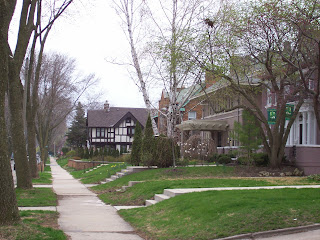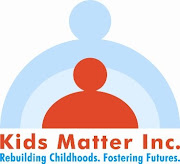Tuesday, May 5, 2009
Citations
One of the main reasons people become Foster Parents is:
LOVE Love isn't just something for a boy and girl to experience, or a man or woman, love is more!Love is giving someone your life. An emotion no one in the world can explain, only feel in the depths of their soul. Love is something that is selfless and pure. Love is rare but also meant to share in many ways! Sometimes love hurts and sometimes only one person feels that way, love is real but not too clear! Love is complicated in so many ways that I still can't comprehend today. All I know is that a mother's gentle touch and God's love is more then enough. So to make somebody's day grand, you need to say how much you care and share the love baby! Shannon, age 15 |
Monday, May 4, 2009
Artist Statement

My name is Frank Blinkewitz, I am a third year student at the University of Milwaukee pursuing a Communication degree. This semester I decided to take a class titled Multicultural Film 150. Part of this class involves a component called Service Learning. Service learning is a way to learn about a particular subject through actively being a part in the learning process. The Service Learning component that was selected for this class has us actively involved in the Foster Care organization known as Kids Matter. Through the course of the semester we have been researching the different aspects of Foster care and have each chosen a specific aspect that we have focused on to develop our blog sites that are going to be linked together to create one ultimate archive for the use of the Kids Matter organization.
 |
Up until relatively recently, the prevailing official approach was to put children in orphanages and poorhouses. If the child was lucky, a loving family would eventually adopt them from the orphanage. Alternatively, a less suited family would take the child on, often to use them for free labor, or the child would stay in the orphanage until reaching adulthood.
Over the past hundred years, the trend in North America and Europe has shifted away from orphanages and towards foster homes. The underlying philosophy of foster care is that children are better off, emotionally and psychologically, in a home environment, with someone filling the role of a parent. The logic is that with one or more foster parents taking care of a smaller number of children, the child should have more of the attention and love they need to grow into healthy adults. Today, there are roughly half a million U.S. children in the foster care system.
Foster care and adoption both provide family environments for children who can't be with their biological parents, but it's important to understand that they are very different institutions. While foster parents are encouraged to connect emotionally with the children in their care, foster families are not meant to be permanent replacements for biological families. In most cases, the ultimate goal is to reunite children with their biological families, as soon as the family is able and fit. This could be as short as a few days or as long as a few years.
 |
Failing family reunification, the ultimate goal is to find adoptive parents who will take on all the emotional and legal responsibilities of birth parents. In the eyes of the law, adopting a child is pretty much the same thing as giving birth to them. Fostering a child, on the other hand, doesn't give the foster parents any major authority over the child's life.
On occasion, foster parents will eventually adopt foster children in their care, but more often, the foster home is a means of returning the child to his or her birth parents or a stop on the way to another home. Unfortunately, many children end up bouncing from foster home to foster home, never finding a permanent family. In this regard, the foster care system is clearly imperfect, since it often adds more instability to a child's life.
The fundamental mission of the foster care system, then, is very simple. Actually putting it into action is another matter. Foster care involves a lot of hard work on the part of administrators, social workers, parents and, most importantly, foster children. In the next couple sections, we'll find out a little about life in this world.
The Organization
In the United States, foster care operates on the local level, rather than on the national level. The structure varies somewhat from state to state, as do the specific names for government agencies and programs, but most states follow the same general model.In most cases, the state's division of social services, part of the state department of health and human services, heads up the entire system. These agents oversee county social services departments as well as private foster care agencies. This is one of the most misunderstood facts of foster care: While government regulations generally direct how foster care operates, independent non-profit organizations (licensed by the state) do a huge amount of the actual work in some areas. These organizations generally receive government funds, but they may also depend on charitable donations.
How Foster Care Works
by Tom Harris
Introduction to How Foster Care Works
 |
| Foster families are not meant to be permanent replacements for biological families. See morefoster care pictures. |
Throughout history, the fate of these children has depended wholly on the goodwill of the community. In the past, if extended family, neighbors or strangers didn't step in as surrogate parents, parentless children would be turned out on the streets. Today, this sort of community childcare is institutionalized, but it still relies on the kindness and compassion of individual members of the community.
In this article, we'll examine one of the cornerstones of modern institutionalized childcare -- the foster care system. We'll find out how children enter foster care, how adults sign on as foster parents, and how social services regulates the process. If you've ever wondered how you can help kids in need of a home, this article will get you started by introducing you to the foster care system.
Foster Fundamentals
When parents are unable, unwilling or unfit to care for a child, the child must find a new home. In some cases, there is little or no chance a child can return to their parents' custody, so they need a new permanent home. In other situations, children only need a temporary home until their parents' situation changes. In any case, the children need somewhere to stay until a permanent home is possible.Hundreds of years ago, providing this temporary home fell informally to families, neighbors and often to the church. As cities grew larger and more and more children in a community ended up in this unfortunate situation, government institutions took up much of the responsibility.
Friday, May 1, 2009

Foster parenting is one of the most humane institutions this country has ever started. While the laws vary from state to state, it still is possible for someone who may feel so blessed in their own lives that they are willing to share their homes and their love with children that otherwise may not have had the opportunity for a stable home.
While the legal framework for adopting children can be quite convoluted, it still pays to be patient when waiting for a child to adopt, and a life to change. Many have found that patience in these circumstances can prove to be equally rewarding, and life-changing for them as well.
Why Be a Foster Parent
There are many reasons why one would even want to open their homes to a complete stranger. While altruism tops the list of reasons for providing one with a foster home, here are some other things foster parents gain from the experience.
1. Parenthood For Childless Couples – There have been couples that have always wanted children of their own – to care for, to love, and to live with. Unfortunately, not all couples are blessed in this way, as not all parents are gifted with fertility.
Adopting a foster child is one of the ways couples can fulfill their desire for children.
2. Companionship – Children are wonderful beings, they will love you unequivocally and want to be loved in return. Kids are lovely companions, and are loyal and in need of care. If you are looking for someone to care for, and who would care back, then adopting children makes good sense.
Adoptive children may, depending on their circumstance, have emotional problems due to past history. This is all the more the reason to adopt – only a stable family life, and a protective environment, can help these children come to grips with life, and have the opportunity to blossom and grow in their own lives.
These children will also add spice and happiness to a home that may be devoid of laughter and missing something. If you, as a family person, feel that there is a loneliness in your homes walls that can not be dispelled, then a child may bring joy back in to your home.
3. Altruism – Not all adopted children will arrive without some difficulty. It's important to remember that they may be from troubled or needy backgrounds. But, if you look closely into rough, sometimes rebellious eyes, you will find a child that is in sore need of love. And maybe yours could be the only means to break through the ice.
There can be no other joy greater than seeing a child bloom into maturity as a responsible, well-adjusted individual. A good family, and family life, is integral to that growth. Opening up your home to these children could be the breakthrough in their lives as your providing of a stable home can open the avenues that offer these children a second chance.










